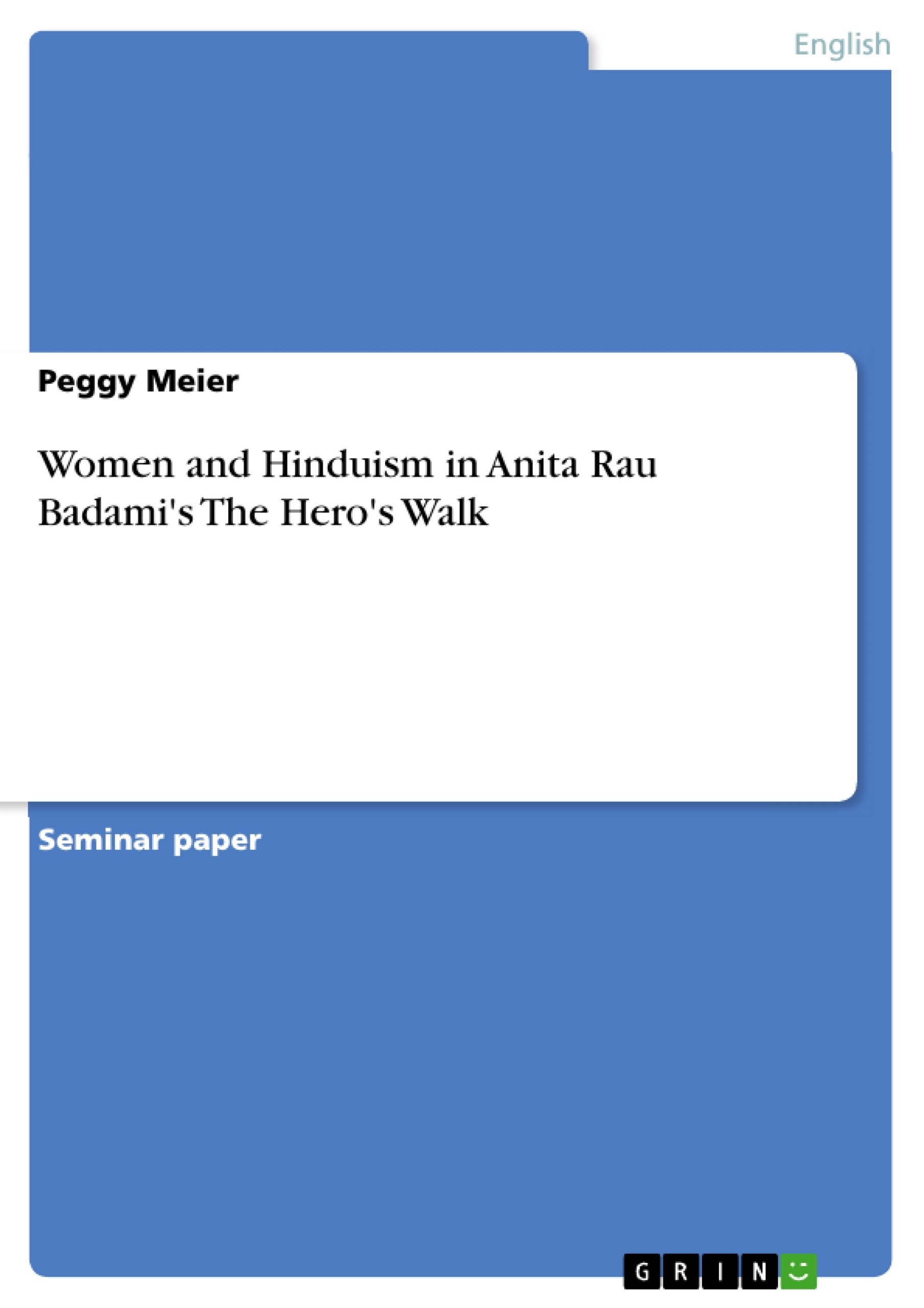Anita Rau Badami’s novel The Hero’s Walk is about an Indian Brahmin family finding its way within the Hindu tradition at the end of the twentieth century. Still believing in conventional attitudes but also being confronted with contemporary problems they have to adapt themselves and reconsider their opinions about what is important in life. Though it is Sripathi Rao, the 52-year-old family father, who is in the centre of the story the complex characters of five female family members are – for the most part – shown very detailed. In Badami’s very emotive novel these five women represent four generations and different opinions about life, Hinduism and femininity.
In the following paper the focus will be on these women and their attitudes towards Hinduism. In the first part the traditional role of women in Hindu culture will be described. To get a deeper insight into Badami’s novel it is important to know what was expected from girls, married and unmarried women but also from widows in past centuries, and which important changes took place. In the second part of this paper the female characters of The Hero’s Walk will be analysed. Each character will be examined concerning her position on Hindu religion and in how far she distances herself from the traditional role. In the course of this, the conflicts between them which result from the different opinions will be examined, too.
Inhaltsverzeichnis (Table of Contents)
- Introduction.
- A short outline of Hinduism.
- The concept of femininity in Hinduism.
- Five different ways of life. The female characters in The Hero's Walk.
- Ammayya a conventional widow.
- Nirmala – a wife and daughter-in-law
- Puttian unmarried woman
- Maya – a young woman breaking with conventions....
- Nandana – a girl with two cultures.
- Conclusion....
- Bibliography...
Zielsetzung und Themenschwerpunkte (Objectives and Key Themes)
This paper aims to analyze the portrayal of women and their attitudes towards Hinduism in Anita Rau Badami's novel, The Hero's Walk. The novel follows an Indian Brahmin family navigating the Hindu tradition in the late 20th century, grappling with both traditional beliefs and modern challenges. The focus will be on five female characters, representing four generations, who embody various perspectives on life, Hinduism, and femininity. The paper will first outline the traditional role of women in Hindu culture, examining expectations placed on girls, married and unmarried women, and widows. Subsequently, the analysis will delve into the individual characters' perspectives on Hinduism and their degree of divergence from traditional roles. Finally, the paper will explore the conflicts arising from these differing opinions.
- The role of women in Hindu tradition and contemporary challenges.
- The portrayal of different perspectives on Hinduism within the family.
- The impact of traditional beliefs and practices on female characters.
- The dynamics of generational differences and conflicting opinions.
- The changing landscape of femininity in the context of modern India.
Zusammenfassung der Kapitel (Chapter Summaries)
The introduction provides an overview of the novel's themes and its focus on the portrayal of women within a Hindu family. The second chapter offers a concise outline of Hinduism, focusing on relevant aspects regarding women's roles and beliefs. The third chapter delves into the concept of femininity in Hinduism, drawing upon scholarly work and examining traditional expectations and practices. The remaining sections focus on individual female characters, analyzing their unique perspectives, challenges, and conflicts within the context of the Hindu tradition. These sections explore how each woman navigates their individual circumstances while grappling with societal expectations and personal beliefs.
Schlüsselwörter (Keywords)
The primary keywords and concepts examined in this paper include: women, Hinduism, femininity, Indian family, traditional roles, contemporary challenges, generational differences, conflicting opinions, cultural adaptation, The Hero's Walk, Anita Rau Badami, Brahmin, caste system, reincarnation, dowry, arranged marriage, and social change.
- Arbeit zitieren
- Peggy Meier (Autor:in), 2005, Women and Hinduism in Anita Rau Badami's The Hero's Walk, München, GRIN Verlag, https://www.grin.com/document/65522



